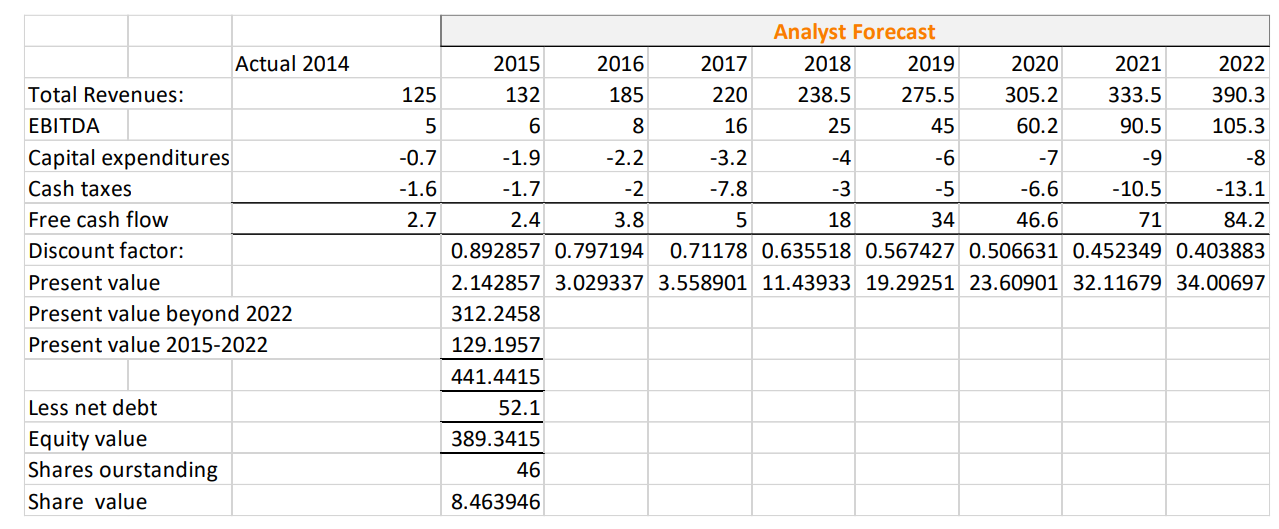Question
ABC develops computer products for consumers in Australia. In June 2014, a team of analysts issued a research report that valued ABCs stock at $8.46
ABC develops computer products for consumers in Australia. In June 2014, a team of analysts issued a research report that valued ABCs stock at $8.46 per share, compared to the then-current market price of $11. The research reports discounted cash flow valuation table is reproduced below. The 2014 figures are as reported by ABC, but the 2015 through 2022 figures are analysts forecasts. Key assumptions include a weighted average cost of capital of 12%, cost of equity 9% and a perpetual growth rate of 1%. All dollar amounts are in millions except share value.
Required: 1, The analyst of ABC used the free cash flows to firm (FCFF) or free cash flow to equity (FCFE) to calculate the free cash flow in this case? And why?
2, Compare the method the analysts of ABC used to calculate free cash flow in this case with the free cash flow method (the one that most suitable for the firm to use in Australia) that we introduced in week 8. Is there any difference or not? Explain in detail.
3, What role does the 9% cost of equity play in the free cash flow valuation analysis in this case? How about the role of cost of equity in the abnormal earnings valuation analysis?
4, Explain in detail to someone unfamiliar with present value calculations about how the Present value 20152022(i.e., $129.1957) is computed. Please show your detailed calculation with explanations.
5, Explain in detail how the figure $312.2458 for Present value beyond 2022 is computed. Please show your detailed calculation with explanations. 
6, Why does the analyst team subtract an amount for net debt in arriving at Equity value in this case? (Note: The term net debt is defined for spreadsheet purposes as financial liabilities (e.g., loans) minus any financial assets (e.g., money market investments)
7, What share value estimate would the ABC have calculated if they had used an abnormal earnings value approach rather than a discounted cash flow approach and had developed forecasts of abnormal earnings and book values that were consistent with the cash flow forecast in the above worksheet? Why?
8, Sometimes analysts research reports contain inadvertent computational errors. What would the estimated value of ABCs stock have been if the analysts mistakenly used 64 million shares outstanding rather than the correct 46 million share count?
9, If you were the analyst of ABC in June 2014, what would be your investment recommendation advice to the investors of ABC based on your discounted cash flow valuation analysis?
Step by Step Solution
There are 3 Steps involved in it
Step: 1

Get Instant Access to Expert-Tailored Solutions
See step-by-step solutions with expert insights and AI powered tools for academic success
Step: 2

Step: 3

Ace Your Homework with AI
Get the answers you need in no time with our AI-driven, step-by-step assistance
Get Started


